Swan 65 Ketch
Sailboat specifications
The Swan 65 is a 64’7” (19.68m) cruiser-racer sailboat designed by Sparkman & Stephens (United States). She was built between 1971 and 1989 by Nautor's Swan (Finland) with 41 hulls completed. The Ketch version displays a divided sail plan guarantying less effort and better balance adjustment.
The Swan 65 is as well listed, on Boat-Specs.com, in Sloop version (see all the versions compared).
The Swan 65 is as well listed, on Boat-Specs.com, in Sloop version (see all the versions compared).
Swan 65's main features
- Model
- Swan 65
- Version
- Ketch
- Hull type
- Monohull
- Category
- Offshore cruiser-racer sailboat
- Sailboat builder
- Sailboat designer
- Country
- Finland
- Construction
- Hull and deck: GRP (glass reinforced polyester)
- Number of hulls built
- 41
- First built hull
- 1971
- Last built hull
- 1989
- Appendages
- Keel : fin without bulb
- Helm
- Single helm wheel
- Rudder
- Single rudder on skeg
- Unsinkable
- No
- Trailerable
- No
- Standard public price ex. VAT (indicative only)
- N/A €
Swan 65's main dimensions
- Hull length
- 64’ 7”19.68 m
- Waterline length
- 47’14.33 m
- Beam (width)
- 16’ 4”4.96 m
- Draft
- 9’ 6”2.9 m
- Mast height from DWL
- 85’ 2”25.98 m
- Light displacement (MLC)
- 70107 lb31800 kg
- Ballast weight
- 30644 lb13900 kg
Swan 65's rig and sails
- Upwind sail area
- 2252 ft²209.2 m²
- Downwind sail area
- 4869 ft²452.3 m²
- Mainsail area
- 620 ft²57.6 m²
- Mizzen sail area
- 272 ft²25.3 m²
- Mizzen staysail area
- 715 ft²66.4 m²
- Genoa area
- 1359 ft²126.3 m²
- Symmetric spinnaker area
- 3261 ft²303 m²
- IiFore triangle height (from mast foot to fore stay top attachment)
- 74’ 11”22.83 m
- JiFore triangle base (from mast foot to bottom of forestay)
- 24’ 2”7.38 m
- PiMainsail hoist measurement (from tack to head)
- 67’ 8”20.64 m
- EiMainsail foot measurement (from tack to clew)
- 18’ 4”5.58 m
- Rigging type
- Ketch Marconi masthead
- Mast configuration
- Keel stepped mast
- Rotating spars
- No
- Number of levels of spreaders
- 2
- Spreaders angle
- 0 °
- Spars construction
- Aluminum spars
- Standing rigging
- 1x19 strand wire discontinuous
Swan 65's performances
- IOR ratingiIOR, or International Offshore Rule, was a measurement rule system used internationally for ocean racing. It allows boats of different sizes and designs to race each other fairly. Therefore, by comparing these values, we can have an indication of the relative speed of 2 boats.
- 45.0
- Upwind sail area to displacementiThe ratio sail area to displacement is obtained by dividing the sail area by the boat's displaced volume to the power two-thirds.
The ratio sail area to displacement can be used to compare the relative sail plan of different sailboats no matter what their size.
Upwind: under 18 the ratio indicates a cruise oriented sailboat with limited performances especially in light wind, while over 25 it indicates a fast sailboat. - 224 ft²/T20.84 m²/T
- Downwind sail area to displacementiThe ratio sail area to displacement is obtained by dividing the sail area by the boat's displaced volume to the power two-thirds.
The ratio sail area to displacement can be used to compare the relative sail plan of different sailboats no matter what their size. - 414 ft²/T38.45 m²/T
- Displacement-length ratio (DLR)iThe Displacement Length Ratio (DLR) is a figure that points out the boat's weight compared to its waterline length. The DLR is obtained by dividing the boat's displacement in tons by the cube of one one-hundredth of the waterline length (in feet).
The DLR can be used to compare the relative mass of different sailboats no matter what their length:
a DLR less than 180 is indicative of a really light sailboat (race boat made for planning), while a DLR greater than 300 is indicative of a heavy cruising sailboat. - 306
- Ballast ratioiThe Ballast ratio is an indicator of stability; it is obtained by dividing the boat's displacement by the mass of the ballast. Since the stability depends also of the hull shapes and the position of the center of gravity, only the boats with similar ballast arrangements and hull shapes should be compared.
The higher the ballast ratio is, the greater is the stability. - 44 %
- Wetted area
- 775 ft²72 m²
- Critical hull speediAs a ship moves in the water, it creates standing waves that oppose its movement. This effect increases dramatically the resistance when the boat reaches a speed-length ratio (speed-length ratio is the ratio between the speed in knots and the square root of the waterline length in feet) of about 1.2 (corresponding to a Froude Number of 0.35) . This very sharp rise in resistance, between speed-length ratio of 1.2 to 1.5, is insurmountable for heavy sailboats and so becomes an apparent barrier. This leads to the concept of "hull speed".
The hull speed is obtained by multiplying the square root of the waterline length (in feet) by 1.34. - 9.19 knots
Swan 65's auxiliary engine
- Engine(s)
- 1 inboard engine
- Engine(s) power (min./max.)
- 89 HP / 148 HP
- Fuel type
- Diesel
- Fuel tank capacity
- 256.2 gal970 liters
Swan 65's accommodations and layout
- Cockpit
- Closed aft cockpit
- Cabin(s)
- 4
- Berth(s) (min./max.)
- 11 / 13
- Head(s)
- 3
- Freshwater tank capacity
- 361.9 gal1370 liters
- Fridge/ice-box capacity
- 113.6 gal430 liters
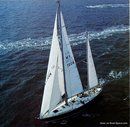
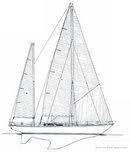

Nautor's Swan Swan 65 sailplan - - 2/14
Picture extracted from the commercial documentation © Nautor's Swan
Picture extracted from the commercial documentation © Nautor's Swan


Nautor's Swan Swan 65 sailplan - - 3/14
Picture extracted from the commercial documentation © Nautor's Swan
Picture extracted from the commercial documentation © Nautor's Swan
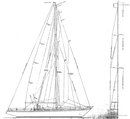

Nautor's Swan Swan 65 sailplan - - 4/14
Picture extracted from the commercial documentation © Nautor's Swan
Picture extracted from the commercial documentation © Nautor's Swan


Nautor's Swan Swan 65 layout - - 5/14
Picture extracted from the commercial documentation © Nautor's Swan
Picture extracted from the commercial documentation © Nautor's Swan


Nautor's Swan Swan 65 layout - - 6/14
Picture extracted from the commercial documentation © Nautor's Swan
Picture extracted from the commercial documentation © Nautor's Swan
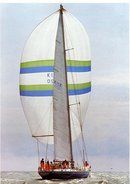

Nautor's Swan Swan 65 sailing - - 7/14
Picture extracted from the commercial documentation © Nautor's Swan
Picture extracted from the commercial documentation © Nautor's Swan
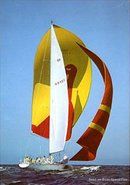

Nautor's Swan Swan 65 sailing - - 8/14
Picture extracted from the commercial documentation © Nautor's Swan
Picture extracted from the commercial documentation © Nautor's Swan
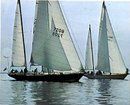

Nautor's Swan Swan 65 sailing - - 9/14
Picture extracted from the commercial documentation © Nautor's Swan
Picture extracted from the commercial documentation © Nautor's Swan


Nautor's Swan Swan 65 interior and accommodations - - 10/14
Picture extracted from the commercial documentation © Nautor's Swan
Picture extracted from the commercial documentation © Nautor's Swan


Nautor's Swan Swan 65 interior and accommodations - - 11/14
Picture extracted from the commercial documentation © Nautor's Swan
Picture extracted from the commercial documentation © Nautor's Swan
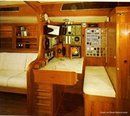

Nautor's Swan Swan 65 interior and accommodations - - 12/14
Picture extracted from the commercial documentation © Nautor's Swan
Picture extracted from the commercial documentation © Nautor's Swan


Nautor's Swan Swan 65 interior and accommodations - - 13/14
Picture extracted from the commercial documentation © Nautor's Swan
Picture extracted from the commercial documentation © Nautor's Swan
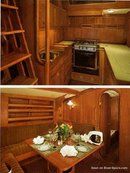

Nautor's Swan Swan 65 interior and accommodations - - 14/14
Picture extracted from the commercial documentation © Nautor's Swan
Picture extracted from the commercial documentation © Nautor's Swan
Similar sailboats that may interest you:
Sailboats
First built hull
Hull length
1988
52’ 6”16 m
2014
58’ 1”17.7 m
1997
61’ 11”18.88 m
2010
63’ 1”19.22 m
1992
62’18.89 m
1987
51’ 10”15.78 m
1986
56’ 4”17.15 m
2008
66’20.12 m
2008
66’20.12 m
1971
64’ 7”19.68 m
1974
47’ 10”14.57 m
1974
47’ 10”14.57 m
2000
52’ 6”16 m
2017
50’ 11”15.51 m
1992
58’17.69 m